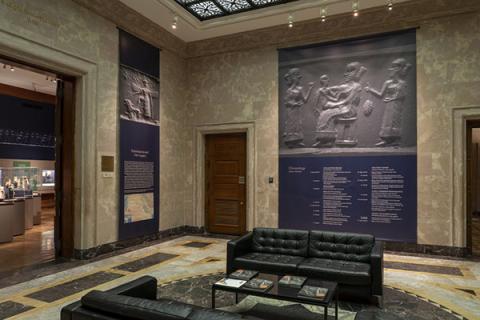
The first cities in history emerged midway through the fourth millennium BC in Mesopotamia, in present-day Iraq, home to the ancient civilizations of Sumer and Akkad. These cities, where writing was invented and major cult centers were formed, provide us with fascinating visual and textual evidence on the lives of women in complex early societies.
This exhibition focuses on the region’s fundamental developments during the late fourth and third millennia BC, bringing together a comprehensive selection of artworks that capture rich and shifting expressions of women’s lives at the time. These works bear testament to women’s roles in religious contexts as goddesses, priestesses, and worshippers, as well as in social, economic, and political spheres as mothers, workers, and rulers. One particularly remarkable woman who wielded considerable religious and political power was the high priestess and poet Enheduanna (ca. 2300 BC), the first known author in world literature.
The objects that follow exemplify painstaking artistry and striking stylistic variety in the depiction of women, often combining delicately executed naturalism with powerfully expressive stylization. Masterpieces such as the jewelry of Queen Puabi (ca. 2500 BC) represent the earliest perfection of metalworking techniques that are still in use today. These works have withstood millennia, lending us breathtaking insight into an often-overlooked aspect of an ancient patriarchal society: womanhood.
She Who Wrote: Enheduanna and Women of Mesopotamia is made possible through the generosity of Jeannette and Jonathan Rosen.
Additional support is provided by an anonymous donor in memory of Dr. Edith Porada, the Andrew W. Mellon Research and Publications Fund, Becky and Tom Fruin, Laurie and David Ying, and by a gift in memory of Max Elghanayan, with assistance from Lauren Belfer and Michael Marissen, and from an anonymous donor.
